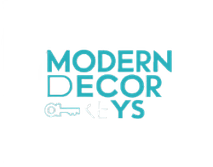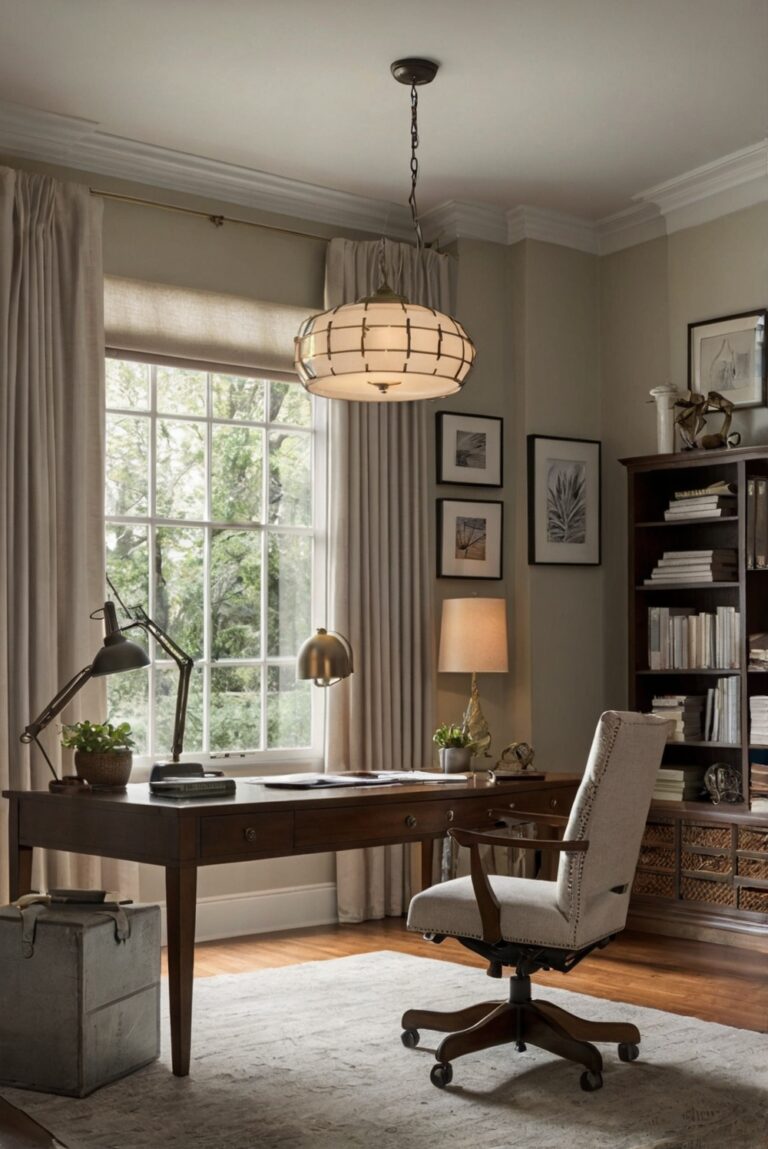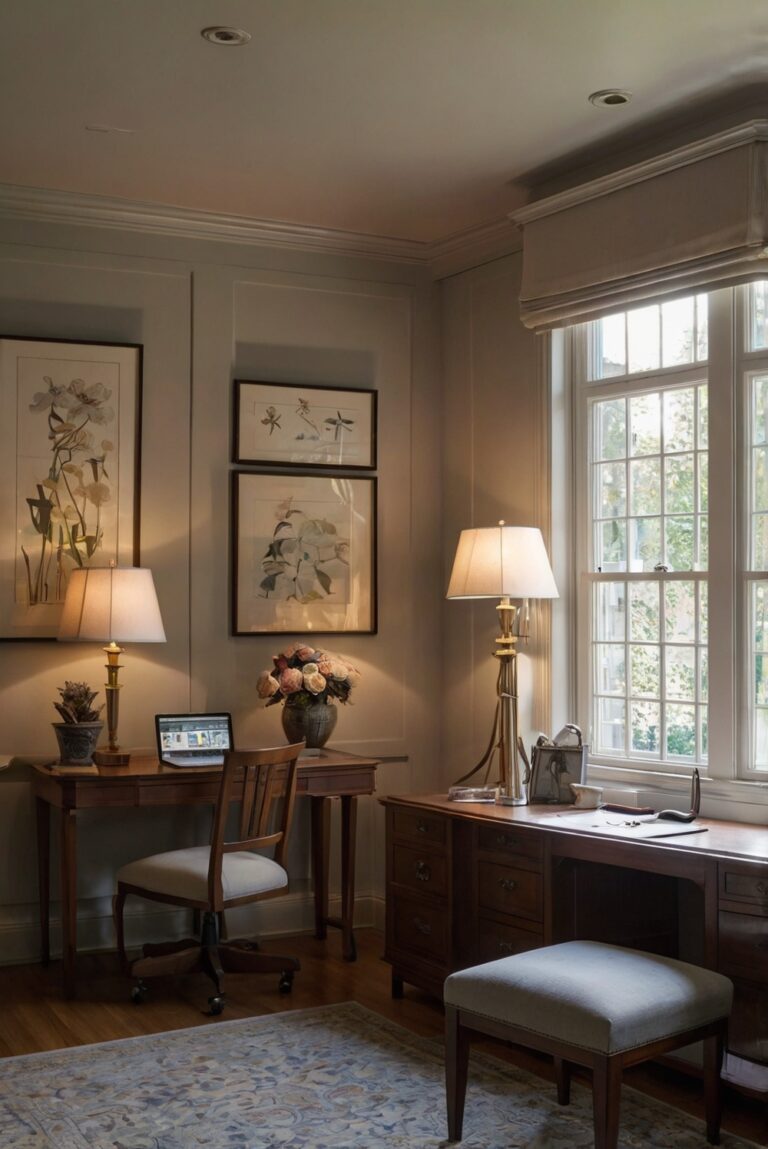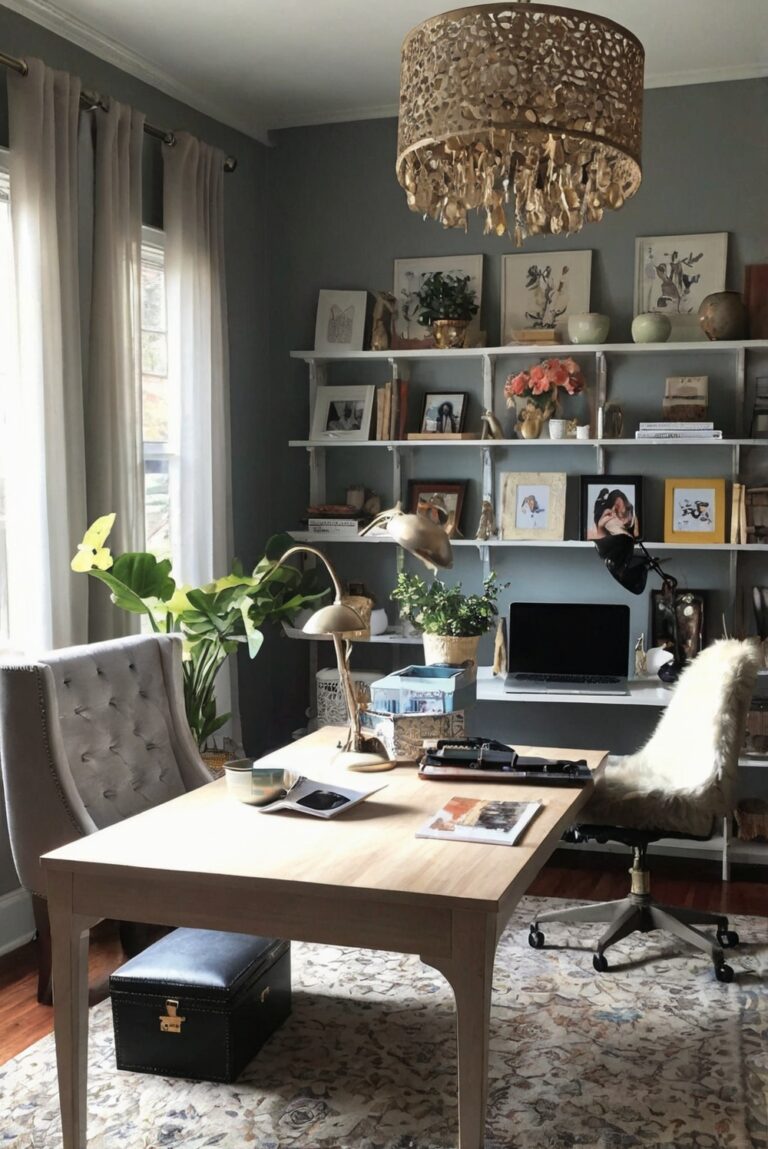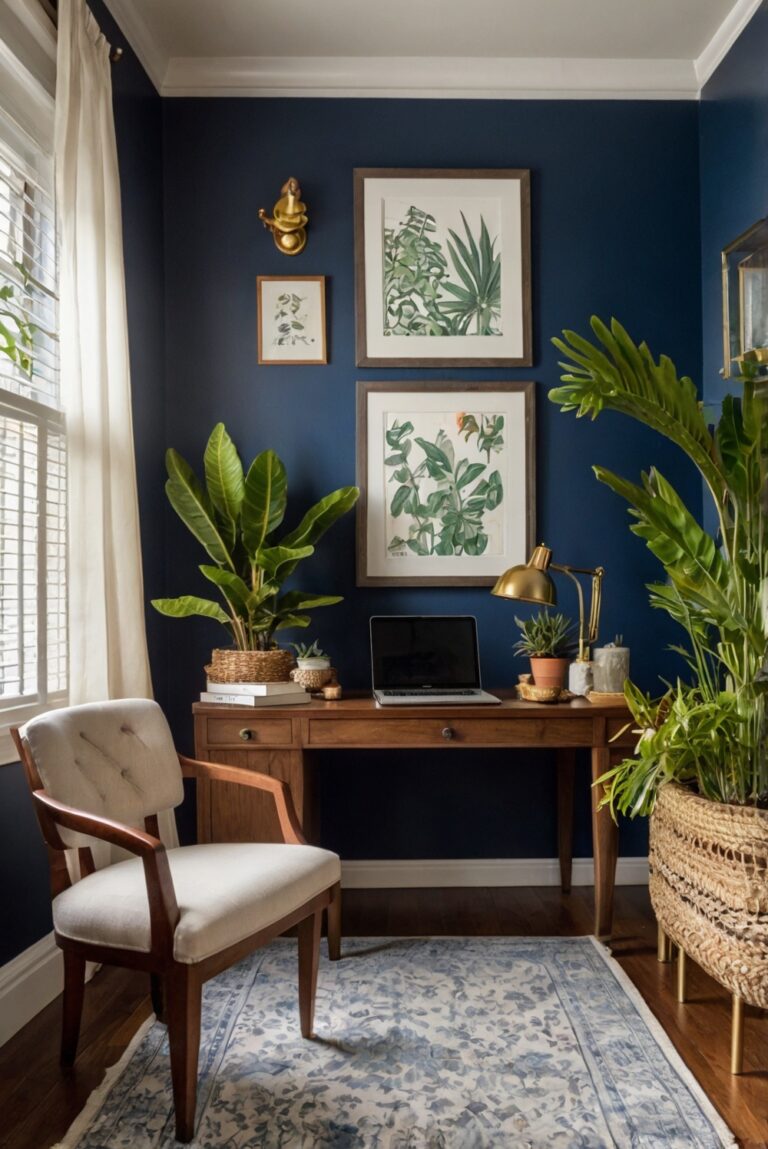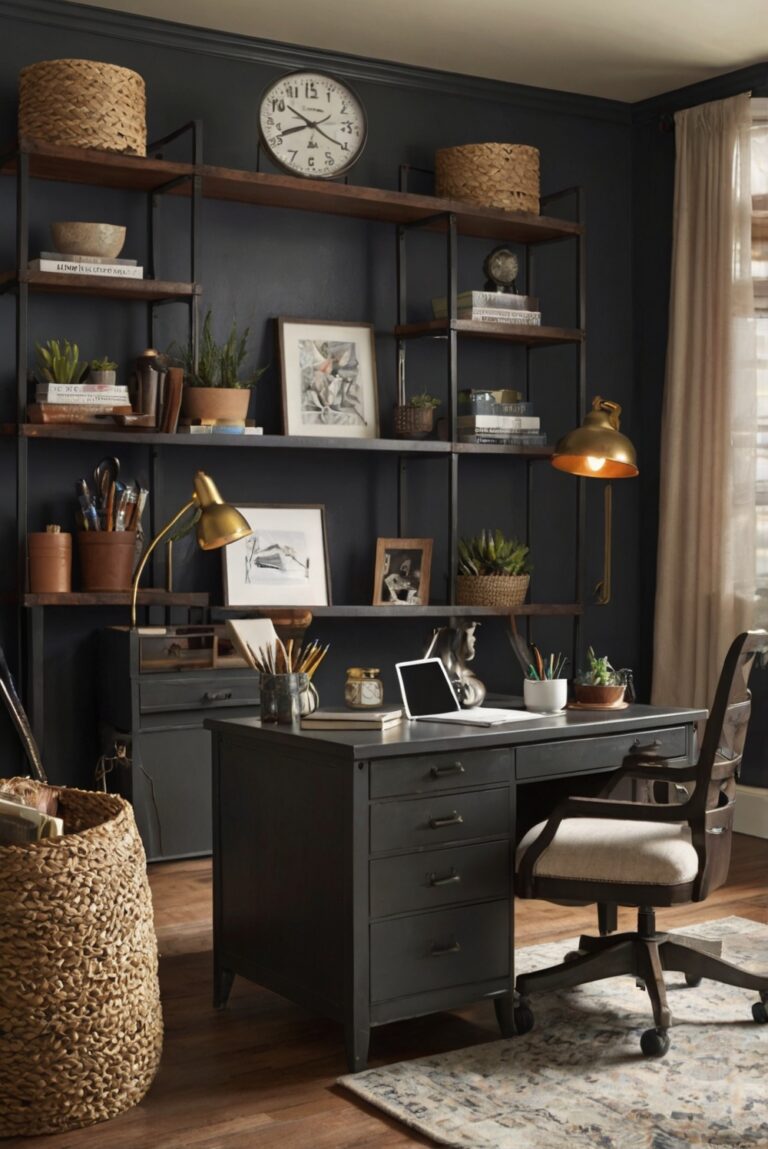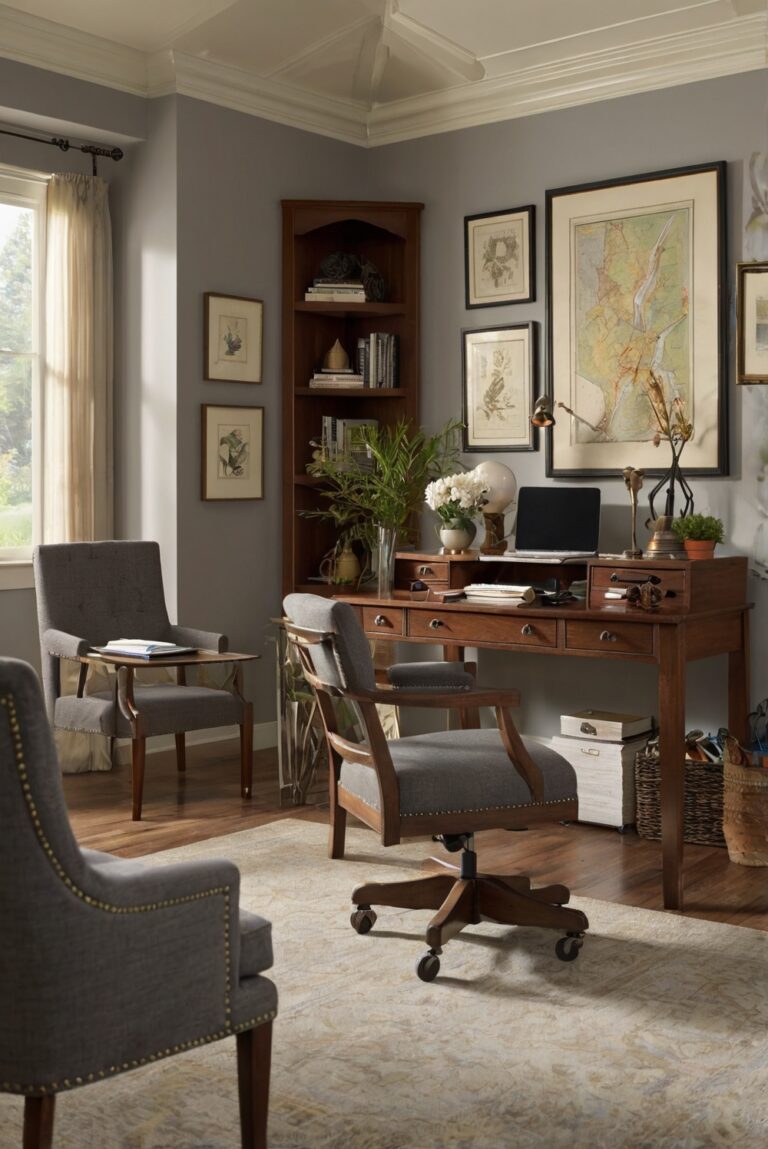Welcome to a daily interior designer routine for creating a striking home office lighting plan that minimizes shadows and glare. Discover how to illuminate your space effectively.
To design a home office lighting plan that minimizes shadows and glare, start by assessing the natural light sources in the room. Consider positioning your desk near a window to maximize daylight and reduce the need for artificial lighting during the day.
Next, incorporate a combination of ambient lighting, task lighting, and accent lighting. Ambient lighting should be evenly distributed to prevent harsh shadows, while task lighting should focus on areas where you work, such as your desk.
Choose fixtures with adjustable brightness or dimmers to control the intensity of light and reduce glare. Additionally, use light-colored walls and surfaces to reflect light and reduce shadows.
By following these steps and considering the layout and functionality of your home office, you can create a well-lit space that enhances productivity and reduces eye strain.
How to Design a Home Office Lighting Plan to Minimize Shadows and Glare?
Assess Your Space:
When designing a home office lighting plan, the first step is to assess your space carefully. Look at the layout of your office, the placement of furniture, and the natural light sources available. Identify areas where shadows are likely to form and where glare could be a problem. Understanding the specific lighting needs of your space is crucial in creating an effective lighting plan.
Consider Natural Light:
Natural light is an essential element in any home office. It not only helps reduce energy costs but also provides a connection to the outdoors that can boost productivity and well-being. When designing your lighting plan, consider how natural light enters your space throughout the day. Position your desk and other work areas to take advantage of natural light while minimizing glare and shadows.
Choose the Right Light Fixtures:
Selecting the right light fixtures is key to achieving a balanced and efficient lighting plan. Consider a mix of ambient, task, and accent lighting to create a layered lighting scheme that addresses different needs. Ambient lighting provides overall illumination, while task lighting focuses on specific work areas. Accent lighting can be used to highlight artwork or architectural features. Choose fixtures that are adjustable and dimmable to control the intensity of light and reduce glare.
Position Your Light Sources:
Proper positioning of light sources is crucial in minimizing shadows and glare in your home office. Avoid placing lights directly above or behind you, as this can create harsh shadows and cause glare on screens. Instead, position light fixtures to the side of your workspace or use indirect lighting to reduce glare. Consider the height and angle of your light sources to ensure even illumination without creating distracting shadows.
Use Task Lighting:
Task lighting is essential for providing focused illumination on your work surface. Consider using a desk lamp with an adjustable arm to direct light where it’s needed most. Position task lighting at a comfortable distance from your work area to prevent glare and reduce eye strain. Choose a task light with a color temperature that suits your preferences and tasks, such as a cooler light for high-focus tasks and a warmer light for a more relaxed atmosphere.
In conclusion, designing a home office lighting plan to minimize shadows and glare requires careful consideration of your space, natural light, light fixtures, and positioning of light sources. By assessing your needs and implementing a layered lighting scheme, you can create a comfortable and productive work environment that enhances your well-being and efficiency. Experiment with different lighting arrangements and adjust as needed to find the perfect balance of light in your home office.
1. How do I minimize shadows in my home office lighting plan?
To minimize shadows in your home office lighting plan, consider using a combination of overhead lighting, task lighting, and ambient lighting. Ensure that your desk is well-lit with a task light that illuminates your work surface without causing shadows. Position overhead lights strategically to evenly distribute light throughout the room and minimize shadow casting. Avoid placing lights directly above your head or behind you, as this can create harsh shadows. Opt for indirect lighting options like wall sconces or floor lamps to reduce shadows and create a more comfortable working environment.
2. What are the best lighting fixtures to reduce glare in a home office?
The best lighting fixtures to reduce glare in a home office are those with adjustable brightness and direction. LED desk lamps with dimmer switches and adjustable arms allow you to control the intensity and angle of the light, minimizing glare on your computer screen and work surface. Consider using frosted or diffused light bulbs to soften the light and reduce harsh reflections. Position light fixtures at a comfortable height and angle to prevent glare and eye strain. Additionally, choose light fixtures with a high color rendering index (CRI) to ensure accurate color representation and reduce glare.
3. How can I create a balanced lighting plan in my home office?
To create a balanced lighting plan in your home office, start by assessing the natural light sources in the room. Position your desk near a window to take advantage of natural light and reduce the need for artificial lighting during the day. Supplement natural light with a combination of overhead lighting, task lighting, and ambient lighting to create a well-lit workspace. Use a mix of direct and indirect lighting sources to evenly distribute light and minimize shadows and glare. Experiment with different lighting fixtures and placements to find the right balance that suits your needs and preferences.
4. What color temperature should I choose for my home office lighting?
When designing a home office lighting plan, consider choosing light fixtures with a color temperature of around 4000-5000 Kelvin (K) to promote productivity and focus. Cool white light in this range mimics daylight and can help boost alertness and concentration. Avoid using light fixtures with color temperatures below 3000K, as warm light can create a cozy but dim environment that may cause eye strain and fatigue. LED lights with adjustable color temperature settings allow you to customize the lighting in your home office based on the time of day and your tasks. Experiment with different color temperatures to find the ideal balance for your workspace.
5. What are some tips for setting up a home office lighting plan that minimizes shadows and glare?
To set up a home office lighting plan that minimizes shadows and glare, consider the following tips:
– Position your desk perpendicular to windows to reduce harsh shadows and glare.
– Use light-colored walls and ceilings to reflect light and brighten the room.
– Install adjustable blinds or curtains to control natural light and prevent glare on screens.
– Avoid placing light fixtures directly above or behind you to minimize shadow casting.
– Opt for task lights with adjustable brightness and direction to illuminate your workspace without causing glare.
– Incorporate a mix of lighting sources, including overhead, task, and ambient lighting, to create a well-lit and comfortable workspace.
– Regularly clean light fixtures and bulbs to maintain optimal lighting conditions and prevent glare.
